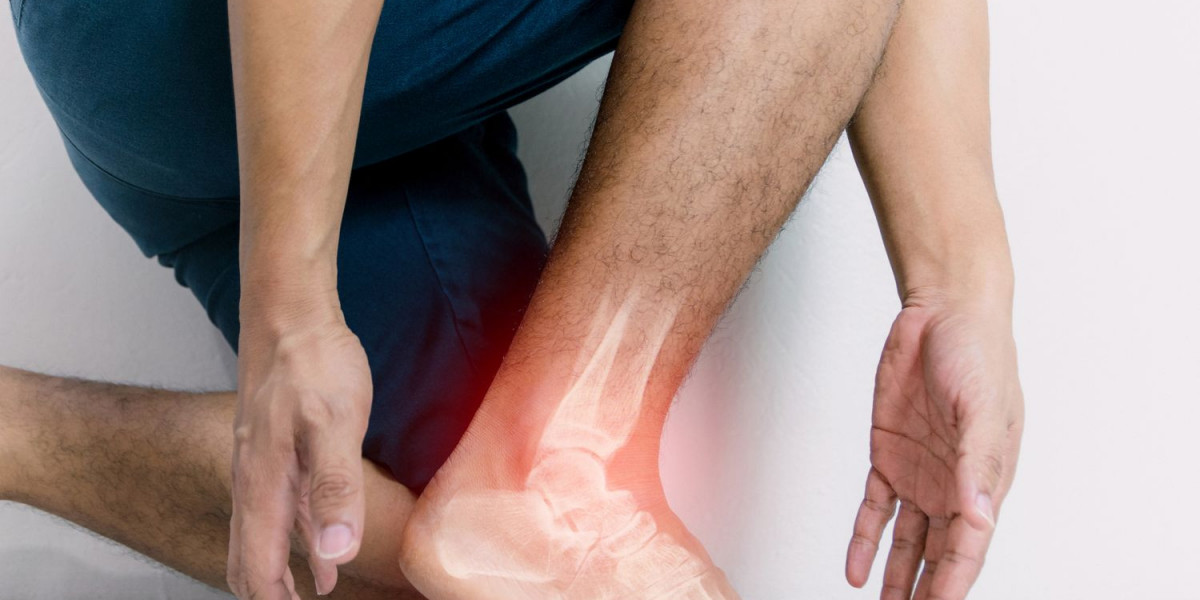As we age, the body undergoes various changes that can lead to discomfort and pain. Among the most common issues elderly individuals face are foot ankle pain and knee pain. These conditions not only affect mobility but also impact overall quality of life. Whether it’s the result of wear and tear or an underlying medical condition, it's crucial to understand the causes, available treatments, and ways to prevent these painful conditions.
Causes of Foot and Ankle Pain in the Elderly
Foot and ankle pain in the elderly can arise from a variety of factors. The aging process causes a natural decline in joint function, but specific conditions can worsen these issues:
1. Arthritis
Osteoarthritis is one of the most common forms of arthritis affecting the elderly. As cartilage wears down, bones in the foot and ankle can rub against each other, leading to pain, stiffness, and inflammation.
2. Plantar Fasciitis
This condition involves inflammation of the tissue that runs along the bottom of the foot, often causing severe pain, especially with the first steps in the morning.
3. Bunions and Hammertoes
Misalignment of the toes can lead to discomfort and pain in the feet, and bunions are a common issue among older adults.
4. Gout
A type of arthritis that often affects the big toe, causing intense pain and swelling. Gout is more common in the elderly due to increased uric acid levels in the blood.
Causes of Knee Pain in the Elderly
Knee pain is another prevalent issue for older adults, often leading to significant mobility problems. The most common causes include:
1. Osteoarthritis
Like the feet and ankles, the knees are particularly susceptible to osteoarthritis, where the cartilage breaks down, resulting in pain and reduced movement.
2. Bursitis
Inflammation of the fluid-filled sacs (bursae) that cushion the knee joint can lead to painful swelling, especially after prolonged activity.
3. Ligament and Tendon Injuries
Overuse and past injuries can lead to weakness in the knee ligaments and tendons, making the knee prone to pain and instability.
4. Patellofemoral Pain Syndrome
Often referred to as "runner's knee," this condition occurs when the kneecap doesn’t move smoothly within its groove, causing pain around the front of the knee.
Treatment Options for Foot and Ankle Pain
Addressing foot and ankle pain requires a multi-faceted approach, depending on the underlying cause. Here are some of the most effective treatment options:
1. Physical Therapy
Regular physical therapy can strengthen the muscles around the foot and ankle, providing better support and reducing pain. Stretching exercises are also highly beneficial.
2. Medications
Nonsteroidal anti-inflammatory drugs (NSAIDs) can help reduce inflammation and pain. In cases of gout, medications to lower uric acid levels may be prescribed.
3. Orthotic Devices
Custom-made orthotics can help distribute weight more evenly and provide cushioning for painful areas, especially when dealing with conditions like plantar fasciitis or bunions.
4. Surgical Intervention
In more severe cases, surgical procedures may be necessary to correct structural issues or replace damaged joints.
Treatment Options for Knee Pain in the Elderly
Similar to foot and ankle pain, knee pain elderly also requires a comprehensive treatment approach:
1. Physical Therapy
Strengthening the muscles around the knee joint can alleviate pressure on the joint, improving both function and stability.
2. Pain Management
NSAIDs or corticosteroid injections can help manage inflammation and pain. Hyaluronic acid injections can also provide lubrication for the knee joint.
3. Assistive Devices
Using a knee brace or cane can help offload pressure from the knee joint, reducing pain and improving mobility.
4. Surgical Intervention
In cases of severe arthritis or ligament damage, knee replacement surgery or arthroscopy might be considered.
Preventing Foot, Ankle, and Knee Pain in the Elderly
While some factors such as genetics cannot be controlled, there are several ways to reduce the risk of developing these painful conditions:
1. Maintaining Healthy Weight
Extra weight puts added stress on the joints, particularly the knees and feet. Maintaining a healthy weight through diet and exercise is crucial for joint health.
2. Regular Exercise
Low-impact activities like swimming, walking, or cycling can help maintain joint flexibility and strength. Exercises focusing on balance can also reduce the risk of falls.
3. Proper Footwear
Wearing shoes that offer proper arch support and cushioning is essential in preventing foot and ankle pain. Avoiding high heels or poorly fitted shoes can also help prevent issues like bunions or plantar fasciitis.
4. Stretching and Flexibility Exercises
Stretching the muscles around the knees, feet, and ankles can prevent stiffness and improve mobility. Yoga and Pilates are great for increasing flexibility.
Conclusion: Looking Ahead to Better Foot, Ankle, and Knee Health
Foot, ankle, and knee pain can significantly affect the elderly, but with the right approach, these conditions can be managed and, in some cases, prevented. Early intervention, combined with a focus on maintaining a healthy lifestyle, can greatly improve the quality of life for older adults suffering from joint pain. At sgvascularctr, we understand the complexities of vascular and joint health and provide tailored treatments to alleviate pain and improve mobility. With advances in medical technology and a holistic approach to care, there is hope for those suffering from these common yet debilitating conditions.
Taking proactive steps toward joint health is more important than ever, and with the right treatment plan, elderly individuals can enjoy a more active, pain-free life.










